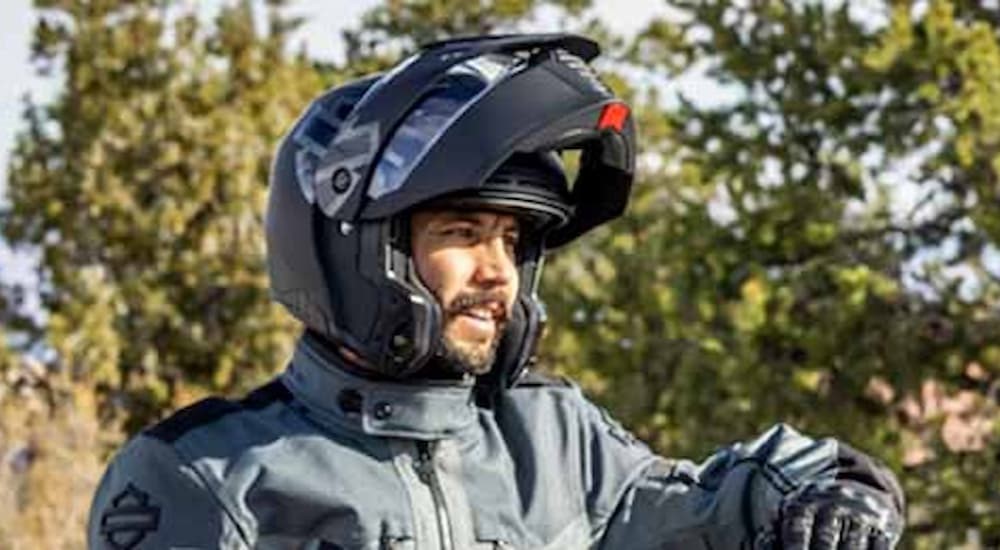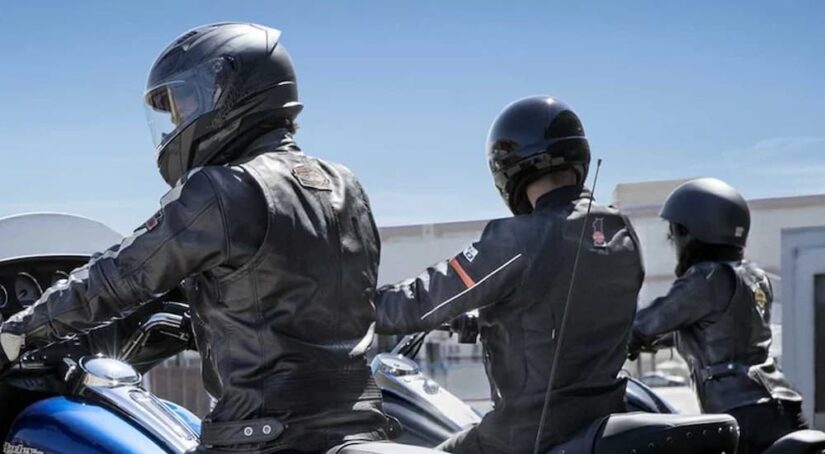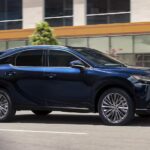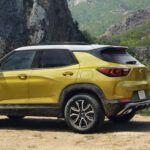When my husband and I started dating, he casually handed me a motorcycle helmet and told me to gear up for a ride. I excitedly hopped in the passenger seat, not realizing how much riding would invigorate my senses and appeal to my penchant for adventure. After that first ride, it was apparent I needed a helmet of my own, so off we went to a local motorcycle dealer for gear.
As a first-time rider, I never realized how many motorcycle helmets are available. A helmet is just a helmet meant to protect your head, right? While helmets all have the same purpose–protection–they can be vastly different in fit, design, and safety. In other words, not all helmets are created equally.
I know from experience that shopping for a motorcycle helmet can be overwhelming, but it doesn’t have to be when you work with a trusted motorcycle dealer and do a little homework beforehand. Going into the process, I wish I had done more research on the different types of helmets and the importance of safety ratings rather than the quick crash course I received on the showroom floor. Although that crash course was informative, there is a better solution—learning about the different types of motorcycle helmets, the various safety ratings, and what to look for in how your helmet fits.

Types of Motorcycle Helmets
Walking into a motorcycle dealership for the first time can be intimidating because of the sheer volume of options, from motorcycles on the showroom floor to the number of helmets and other gear available. Just as everyone has a distinct riding style and need, our heads are also shaped differently. The need for different-sized helmets is critical, but why are there so many different styles?
Full Face Helmets
First-time riders are always encouraged to start with a full-face helmet because it offers the most protection, but plenty of veteran riders opt for this style for the same reason. As the name implies, full-face helmets provide complete coverage from the top of your head to your chin and jaw. Since the coverage is expansive, they typically have integrated vents that you can close in colder weather or open in the summer to optimize the airflow around your head without compromising your level of protection. Depending on your budget, you can even opt for a full-face helmet with integrated Bluetooth technology.
Modular Helmets
Modular helmets share many design similarities with their full-face counterparts but earn their name from their modular designs. For example, they offer full coverage from the top of your head to your jaw, but they incorporate a visor that you can flip open anytime you want. Because of the visor and hinged design, a modular helmet is slightly heavier and not as safe as a full-face helmet, but it still offers far more protection than an open-face helmet. Of course, its design makes it more comfortable for many riders, especially those chasing the horizon on an adventure bike, tourer, or cruiser.
Open Face Helmets
As you shop for a motorcycle helmet, you’ll see plenty of open-face designs, known as three-quarter helmets. This style of helmet leaves your face exposed to the elements because there isn’t a chin bar or jaw protection. Likewise, the open design doesn’t protect your face as you ride, meaning you’ll need to wear eye protection or opt for a design with a partial or full-face visor that offers protection from the sun, weather conditions, and debris on the road.
Dome Helmets
The final category of helmets is the dome or half helmet, which only covers the top of your head and offers the least protection. Minimalist by design, dome helmets are not approved or rated by the Department of Transportation (DOT), leaving many riders to opt for safer alternatives. However, those sold on the half helmet design typically prefer them because they’re lightweight and easily fit around riding goggles or other eyewear.
Getting the Right Fit
As you shop for a motorcycle helmet, the right fit is crucial to your safety in the saddle. A reputable motorcycle dealer will measure your head to determine the size of the helmet you need, which typically ranges from small to extra large. Like the discrepancies in clothing size, sizes vary across brands, making it essential to try on several helmets to find the best fit.
So, how do you know when the helmet fits correctly and offers optimal protection? Think of what you need the helmet to do in extreme situations. It needs to stay on your head and provide the utmost protection during a collision or crash. Because of this, the helmet should be snug enough to prevent any gaps but not so tight that it’s uncomfortable. You should be able to slide two fingers between the chin strap and move your head down without being able to push the helmet up or wiggle it too much around your head. Stability and a snug fit are critical.

Why Safety Ratings Matter
Did you know that every motorcycle helmet in the United States must meet federal safety standards and be certified by the Department of Transportation or DOT? These requirements set industry-wide standards, with the DOT evaluating four critical areas in helmet design and performance–penetration, retention, peripheral vision, and impact. Helmets that pass these standards earn their DOT certification sticker, which is typically placed at the back of the helmet.
While the DOT certification seems straightforward, many unsafe helmets pass through the cracks or have fake DOT certification stickers. For example, some helmets are designed solely for aesthetics and are so lightweight that they don’t meet the average of most federally certified helmets, which typically weigh around three pounds. In these cases, lightweight means far less protection and sub-par materials, like plastic buckles that will fail when you need them the most.
In addition to a DOT certification, you may also find a helmet with a Snell rating. Although Snell ratings are not an industry requirement, they are considered favorable and appealing because Snell is a third-party organization. In other words, Snell’s only interest in helmet design is safety, putting helmets through highly rigorous testing. Manufacturers often pay to have their helmets tested by Snell, with the Snell certification listed under the helmet’s padding as another badge of honor and testament to their high-quality design.
Protecting Your Noggin
As a first-time rider, one of the first things you should grab before you head out the door and climb into the saddle is a helmet, but not just any helmet. Helmets are personal and intimate. It’s your only protection for your head and the only shield your noggin has from the elements, from the wind and rain to the sun, and the unthinkable in the event of a collision. Because of this, a helmet should be personal because what it’s protecting is personal and priceless.
Finding the right helmet isn’t something you can do online, and hope for the best. It’s an in-person endeavor that requires spending time at your local motorcycle dealer and working with someone you trust. It requires trying different helmets on and seeing the different styles firsthand. It also means verifying their safety ratings and ensuring you’re getting the best quality helmet for your budget, adding confidence to your time behind the handlebars as you discover the pure thrills of chasing the horizon.



